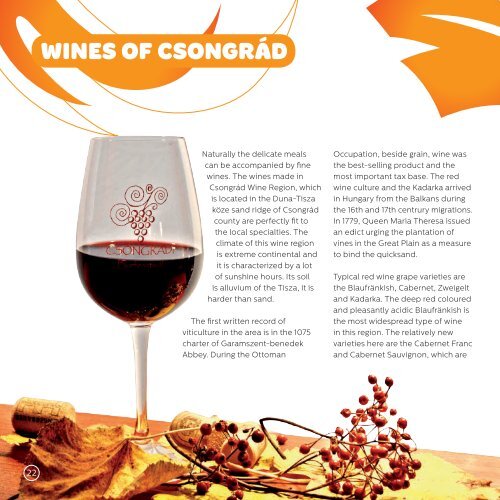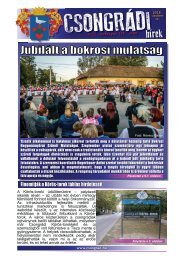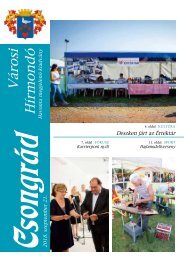Create successful ePaper yourself
Turn your PDF publications into a flip-book with our unique Google optimized e-Paper software.
WINES OF CSONGRÁD<br />
Naturally the delicate meals<br />
can be accompanied by fine<br />
wines. The wines made in<br />
Csongrád Wine Region, which<br />
is located in the Duna-Tisza<br />
köze sand ridge <strong>of</strong> Csongrád<br />
county are perfectly fit to<br />
the local specialties. The<br />
climate <strong>of</strong> this wine region<br />
is extreme continental and<br />
it is characterized by a lot<br />
<strong>of</strong> sunshine hours. Its soil<br />
is alluvium <strong>of</strong> the Tisza, it is<br />
harder than sand.<br />
The first written record <strong>of</strong><br />
viticulture in the area is in the 1075<br />
charter <strong>of</strong> Garamszent-benedek<br />
Abbey. During the Ottoman<br />
Occupation, beside grain, wine was<br />
the best-selling product and the<br />
most important tax base. The red<br />
wine culture and the Kadarka arrived<br />
in Hungary from the Balkans during<br />
the 16th and 17th centrury migrations.<br />
In 1779, Queen Maria Theresa issued<br />
an edict urging the plantation <strong>of</strong><br />
vines in the Great Plain as a measure<br />
to bind the quicksand.<br />
Typical red wine grape varieties are<br />
the Blaufränkish, Cabernet, Zweigelt<br />
and Kadarka. The deep red coloured<br />
and pleasantly acidic Blaufränkish is<br />
the most widespread type <strong>of</strong> wine<br />
in this region. The relatively new<br />
varieties here are the Cabernet Franc<br />
and Cabernet Sauvignon, which are<br />
22

















